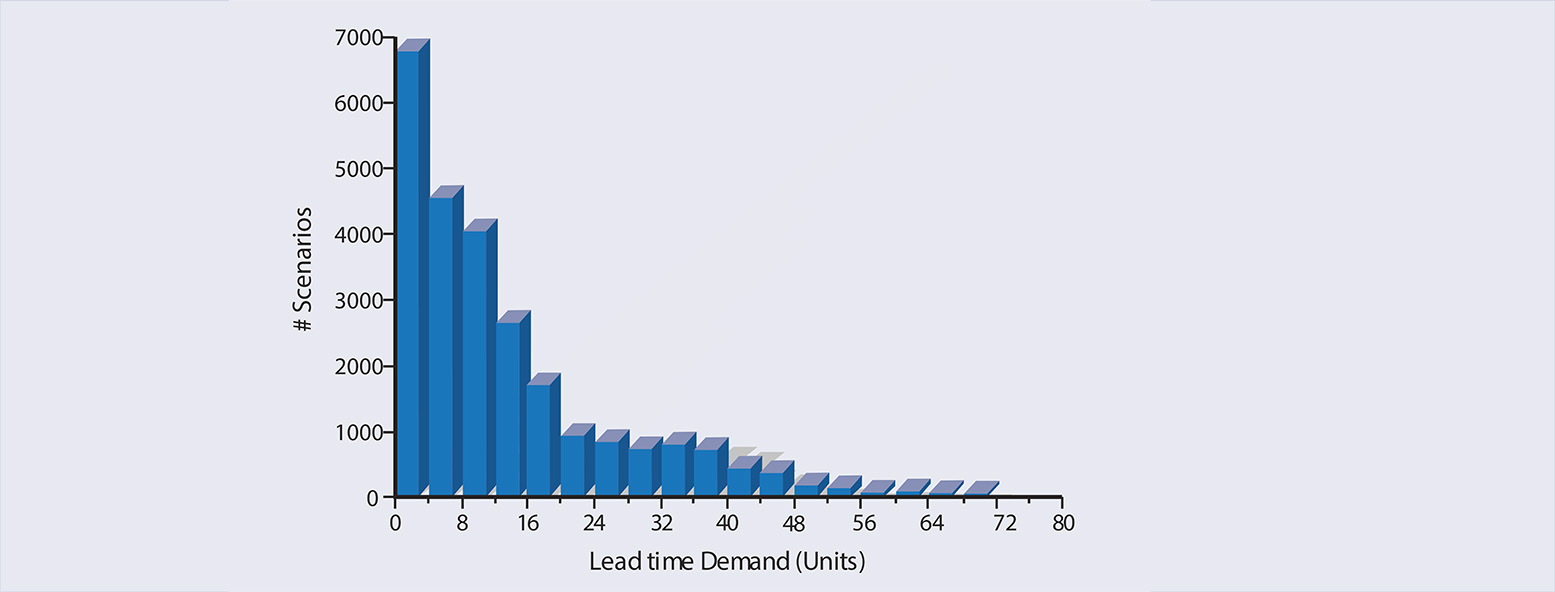Service-Level-Driven Service Parts Planning for Microsoft Dynamics BC or F&SC is a four-step process that extends beyond simplified forecasting and rule-of-thumb safety stocks. It provides service parts planners with data-driven, risk-adjusted decision support.
The math to determine this level of planning simply does not exist in D365 functionality. It requires math and AI that passes thousands of times through calculations for each part and part center (locations). Math and AI like this are unique to Smart. To understand more, please read on.
Step 1. Ensure that all stakeholders agree on the metrics that matter.
All participants in the service parts inventory planning process must agree on the definitions and what metrics matter most to the organization. Service Levels detail the percentage of time you can completely satisfy required usage without stocking out. Fill Rates detail the percentage of the requested usage that is immediately filled from stock. (To learn more about the differences between service levels and fill rate, watch this 4-minute lesson here.) Availability details the percentage of active spare parts with an on-hand inventory of at least one unit. Holding costs are the annualized costs of holding stock accounting for obsolescence, taxes, interest, warehousing, and other expenses. Shortage costs are the cost of running out of stock, including vehicle/equipment downtime, expedites, lost sales, and more. Ordering costs are the costs associated with placing and receiving replenishment orders.
Step 2. Benchmark historical and predicted current service level performance.
All participants in the service parts inventory planning process must hold a common understanding of predicted future service levels, fill rates, and costs and their implications for your service parts operations. It is critical to measure both historical Key Performance Indicators (KPIs) and their predictive equivalents, Key Performance Predictions (KPPs). Leveraging modern software, you can benchmark past performance and leverage probabilistic forecasting methods to simulate future performance. Virtually every Demand Planning solution stops here. Smart goes further by stress-testing your current inventory stocking policies against all plausible future demand scenarios. It is these thousands of calculations that build our KPPs. The accuracy of this improves D365’s ability to balance the costs of holding too much with the costs of not having enough. You will know ahead of time how current and proposed stocking policies are likely to perform.
Step 3. Agree on targeted service levels for each spare part and take proactive corrective action when targets are predicted to miss.
Parts planners, supply chain leadership, and the mechanical/maintenance teams should agree on the desired service level targets with a full understanding of the tradeoffs between stockout risk and inventory cost. A call out here is that our D365 customers are almost always stunned by the stocking levels difference between 100% and 99.5% availability. With the logic for nearly 10,000 scenarios that half a percent outage is almost never hit. You achieve full stocking policy with much lower costs. You find the parts that are understocked and correct those. The balancing point is often a 7-12% reduction in inventory costs.
This leveraging of what-if scenarios in our parts planning software gives management and buyers the ability to easily compare alternative stocking policies and identify those that best meet business objectives. For some parts, a small stock out is okay. For others, we need that 99.5% parts availability. Once these limits are agreed upon, we use the Power of D365 to optimize inventory using D365 core ERP as it should be. The planning is automatically uploaded to engage Dynamics with modified reorder points, safety stock levels, and/or Min/Max parameters. This supports a single Enterprise center point, and people are not using multiple systems for their daily parts management and purchasing.
Step 4. Make it so and keep it so.
Empower the planning team with the knowledge and tools it needs to ensure that you strike agreed-upon balance between service levels and costs. This is critical and important. Using Dynamics F&SC or BC to execute your ERP transactions is also important. These two Dynamics ERPs have the highest level of new ERP growth on the planet. Using them as they are intended to be used makes sense. Filling the white space for the math and AI calculations for Maintenance and Parts management also makes sense. This requires a more complex and targeted solution to help. Smart Software Inventory Optimization for EAM and Dynamics ERPs holds the answer.
Remember: Recalibration of your service parts inventory policy is preventive maintenance against both stockouts and excess stock. It helps costs, frees capital for other uses, and supports best practices for your team.
Extend Microsoft 365 F&SC and AX with Smart IP&O
To see a recording of the Microsoft Dynamics Communities Webinar showcasing Smart IP&O, register here:
https://smartcorp.com/inventory-planning-with-microsoft-365-fsc-and-ax/




















